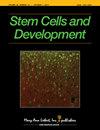Identification of novel multipotent stem cells in mouse spinal cord following traumatic injury.
IF 2
3区 医学
Q3 CELL & TISSUE ENGINEERING
引用次数: 4
Abstract
We showed that injury-induced multipotent stem cells (iSCs) emerge in the brain after stroke. These brain-derived iSCs (B-iSCs) can differentiate into various lineages, including neurons. This study aimed to determine whether similar stem cells can be induced even after non-ischemic injuries, such as trauma to the spinal cord. We characterized these cells, mainly focusing on their stemness, multipotency, and neuronal differentiation activities. Spinal cord injury was produced using forceps in adult mice. On day 3 after spinal cord injury, samples were obtained from the injured areas. Spinal cord sections were subjected to histological analyses. Cells were isolated and assessed for proliferative activities, immunohistochemistry, RT-PCR, FACS, and microarray analysis. Although nerve cell morphology was disrupted within the injured spinal cord, our histological observations revealed the presence of cells expressing stem cells, such as nestin and Sox2 in these areas. In addition, cells extracted from injured areas exhibited high proliferative abilities. These cells also expressed markers of both neural stem cells (e.g., nestin, Sox2) and multipotent stem cells (e.g., Sox2, c-myc, Klf4). They differentiated into adipocytes, osteocytes and chondrocytes, as well as neuronal cells. Microarray analysis further identified similar properties between spinal cord (SC)-derived iSCs and B-iSCs. However, SC-iSCs revealed specific genes related to the regulation of stemness and neurogenesis. We identified similar features related to multipotency in SC-iSCs compared to B-iSCs, including neuronal differentiation potential. Although the differences between SC-iSCs and B-iSCs remain largely undetermined, the present study shows that iSCs can develop even after non-ischemic injuries such as trauma. This phenomenon can occur outside the brain within the CNS.小鼠脊髓创伤后新型多能干细胞的鉴定。
我们发现,损伤诱导的多能干细胞(iSCs)在中风后出现在大脑中。这些脑源性iSCs(B-iSCs)可以分化为各种谱系,包括神经元。这项研究旨在确定即使在非缺血性损伤(如脊髓损伤)后,是否也能诱导类似的干细胞。我们对这些细胞进行了表征,主要关注它们的干性、多能性和神经元分化活性。成年小鼠脊髓损伤是用钳子造成的。在脊髓损伤后第3天,从损伤区域获得样本。对脊髓切片进行组织学分析。分离细胞并评估其增殖活性、免疫组织化学、RT-PCR、FACS和微阵列分析。尽管损伤脊髓内的神经细胞形态被破坏,但我们的组织学观察显示,在这些区域存在表达干细胞的细胞,如巢蛋白和Sox2。此外,从损伤区域提取的细胞表现出高增殖能力。这些细胞还表达神经干细胞(例如巢蛋白、Sox2)和多能干细胞(例如Sox2、c-myc、Klf4)的标记物。它们分化为脂肪细胞、骨细胞、软骨细胞以及神经元细胞。微阵列分析进一步确定了脊髓(SC)衍生的iSCs和B-iSCs之间的相似特性。然而,SC iSCs揭示了与干性和神经发生调节相关的特定基因。与B-iSCs相比,我们发现了与SC iSCs的多能性相关的相似特征,包括神经元分化潜力。尽管SC iSCs和B-iSCs之间的差异在很大程度上尚未确定,但本研究表明,即使在创伤等非缺血性损伤后,iSCs也会发展。这种现象可能发生在大脑外中枢神经系统内。
本文章由计算机程序翻译,如有差异,请以英文原文为准。
求助全文
约1分钟内获得全文
求助全文
来源期刊

Stem cells and development
医学-细胞与组织工程
CiteScore
7.80
自引率
2.50%
发文量
69
审稿时长
3 months
期刊介绍:
Stem Cells and Development is globally recognized as the trusted source for critical, even controversial coverage of emerging hypotheses and novel findings. With a focus on stem cells of all tissue types and their potential therapeutic applications, the Journal provides clinical, basic, and translational scientists with cutting-edge research and findings.
Stem Cells and Development coverage includes:
Embryogenesis and adult counterparts of this process
Physical processes linking stem cells, primary cell function, and structural development
Hypotheses exploring the relationship between genotype and phenotype
Development of vasculature, CNS, and other germ layer development and defects
Pluripotentiality of embryonic and somatic stem cells
The role of genetic and epigenetic factors in development
 求助内容:
求助内容: 应助结果提醒方式:
应助结果提醒方式:


